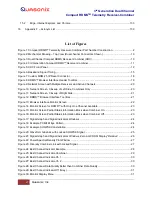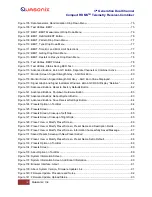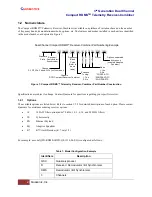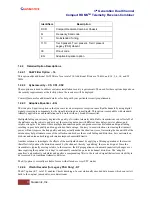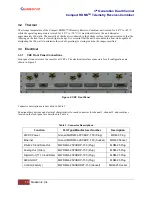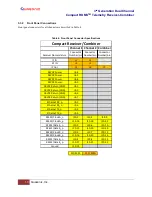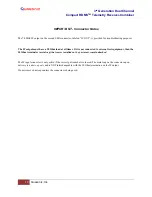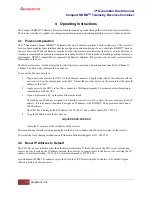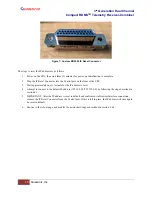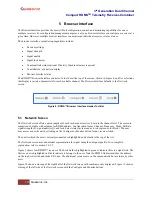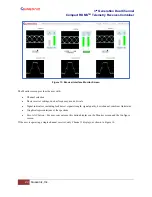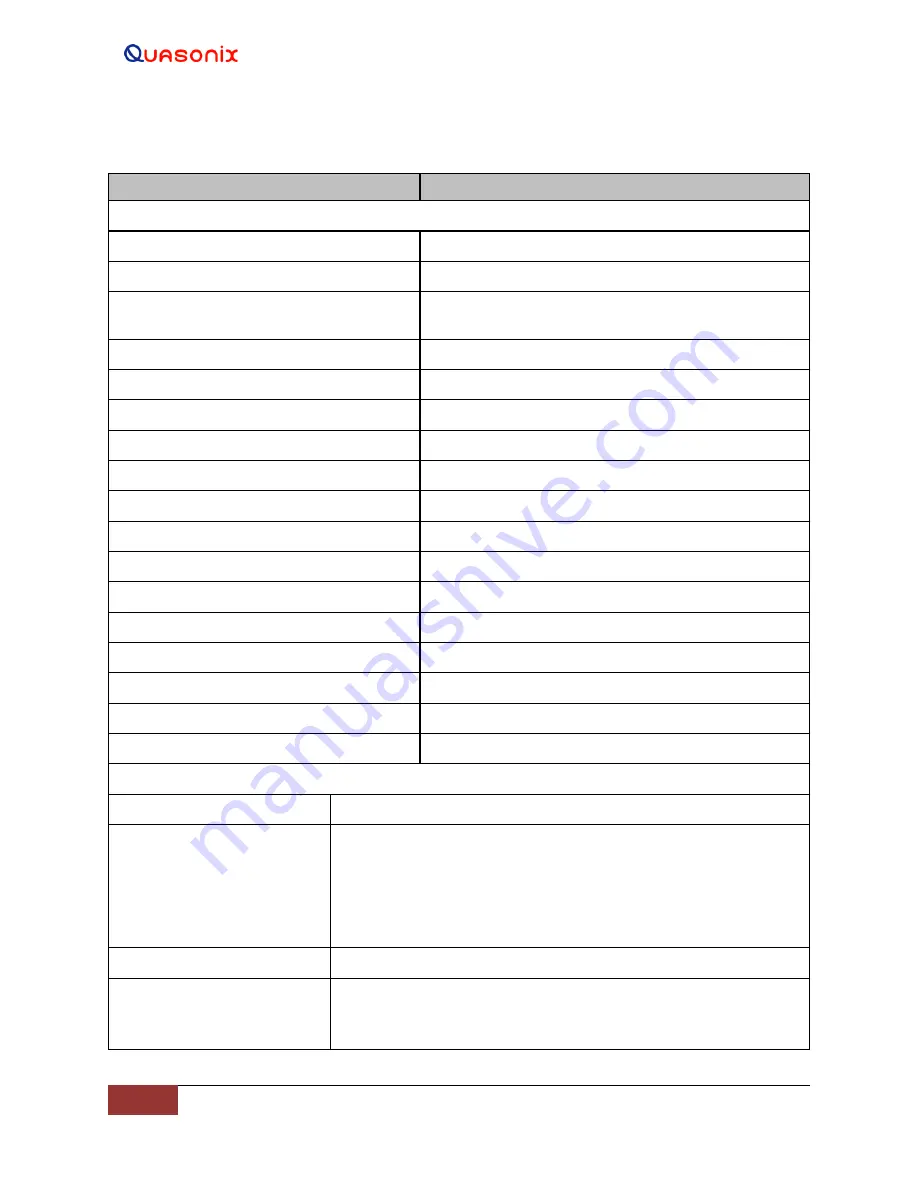
3
rd
Generation Dual Channel
Compact RDMS
TM
Telemetry Receiver-Combiner
7
Quasonix, Inc.
2 Specifications
Characteristic
Specification
Receiver Section
Type
Dual-conversion superheterodyne; two channels
Input RF Frequency
Refer to Table 2
Tuning resolution
Tunes in 62.5 kHz increments, to the 70 MHz IF output, after the 70
MHz IF output, receiver tunes in increments of less than 1 Hz
Frequency stability
1 ppm over temperature; 1 ppm per year aging
Reference oscillator
20 MHz
Noise figure
3.5 dB (typical), 5 dB (maximum)
LO phase noise, measured at 70 MHz IF output
-115 dBc/Hz @ 1 MHz offset
Maximum RF input
+20 dBm (+10 dBm for C-band)
Available gain (to 70 MHz IF output)
114 dB
Gain control
128 dB control range; User selectable: AGC or MGC (AGC freeze)
AGC load impedance
1 KOhm
AGC time constant
Adjustable to any value from 0.1 ms to 1000 ms
First IF bandwidth
60 MHz (nominal)
IF rejection
> 90 dB
Image rejection
70 dB
RF input impedance
50 ohms
VSWR
3:1 Max; 2:1 Typical
Second IF Section
IF frequency
70 MHz
IF output level, nominal
(AGC mode)
Channel 1 and 2: 70 and 250 kHz bandwidths: -15 dBm
0.5
–
4.5 MHz bandwidths: -10 dBm
6 and 10 MHz bandwidths: -5 dBm
14
–
40 MHz bandwidths: -15 dBm
Combiner: -5 dBm
IF output impedance
50 ohms
IF bandwidths
250 kHz, 500 kHz, 1 MHz, 2 MHz, 4.5 MHz, 10 MHz, 20 MHz, 40 MHz. Automatic
selection based on modulation type and data rate, with manual override
Optional: 70 kHz, 1.4 MHz, 3 MHz, 6 MHz, 14 MHz, 28 MHz



